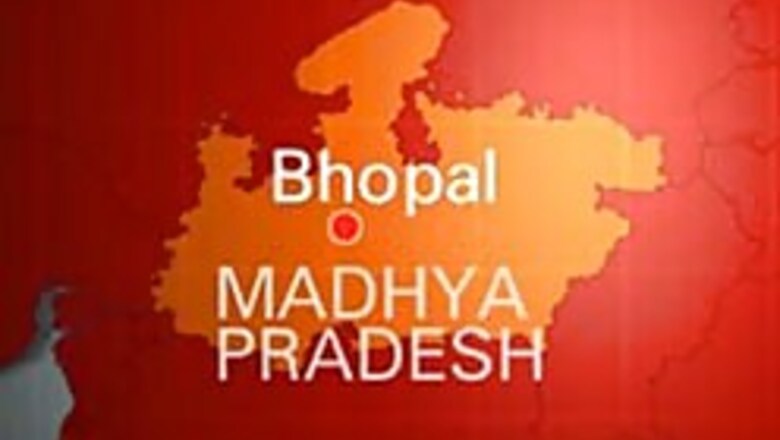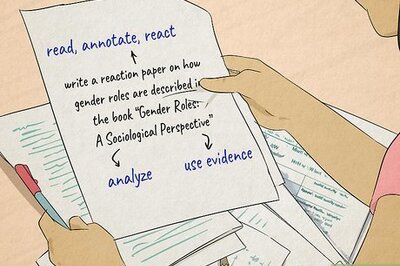
views
Bhopal: People from 150 villages of Madhya Pradesh's Satna district, where malnutrition has led to 42 deaths in the last three months, have decided to boycott elections if the women and children continue to suffer for want of food.
Madhya Pradesh's drive - involving the United Nations Children's Fund (Unicef) and the World Food Programme (WFP) - against malnutrition among children notwithstanding, 42 child deaths have occurred in the past three months in Satna district.
"It is symbolic of a deep-rooted problem afflicting over 80,000 underprivileged children in this state," child rights activists say.
"Children in Satna district villages are dying of malnutrition but the authorities are reluctant to accept the fact and say that the deaths have been caused by various diseases," Prashant Dubey of MP Right to Food campaign (MPRTFC) was quoted by a news agency as saying.
The state has with the assistance of Unicef and the WFP unveiled several special schemes like the Bal Shakti Yojana, the Shaktimaan and the Bal Sanjeevani Abhiyan which seek to treat severely malnourished children. It includes medical services necessary for such kids.
Still, there are 33,000 malnourished children in Madhya Pradesh in the 0-5 years age group, according to National Family Health Survey (NFHS) data. That is about 60 per cent of the total child population in the state.
The recent deaths have come soon after the twelfth phase of the Bal Sanjivani Abhiyan (campaign to bring down level of malnutrition among children) - conducted by the state's Women and Child Development (WCD) Department across the state from May 15. The campaign was carried out in cooperation with Unicef.
"The government claims to have made efforts to curb malnutrition for which it has spent millions of rupees in the past three years. But one can make out the level of nourishment provided to children from the state of Anganwadis (government-run creches) in the district.
"They lack even basic facilities like seats, drinking water, separate toilets or space to cook," said Dubey, who was a part of the investigating team which visited villages in Satna district affected by the malnutrition deaths.
"Anganwadis remain closed. Foodgrains are never available at fair price shops. How do we feed our children in such a case?" asked Bandelal Kol, a resident of one of the affected villages. He had come to the Majhgawan block headquarters of Satna district during a meeting called by the Adivasi Adhikar Manch.
Residents of 150 villages participated in the meeting which resolved to boycott the polls if the government fails to secure the health of their women and children.
"The government claims to be providing us jobs under the National Rural Employment Guarantee Scheme (NREGS) but the payments are not being made to those who work, with the result that many people are migrating elsewhere in search of jobs," said Dalari Bai, another participant at the meeting.
"The main problem is that whatever the state provides under schemes to curb malnutrition can only be supplementary nutrition, whether it is through ICDS (the Integrated Child Development Scheme) or mid-day meals. It is hard to tackle malnutrition if non-availability of food and livelihood is the problem," says Director of Women and Child Welfare Department (WCD) Kalpana Shrivastava.
"The problem is aggravated when none of the material required to monitor the progress of malnourished children and medicines is available. And, above all, the district office of the state's WCD department was not even aware of the deaths of most kids," activists allege.
The state's budget for the development of women and children went up to Rs5.9 billion this year. Of this, Rs3 billion was earmarked for providing nutritious food to undernourished women and children. This was Rs.1.9 billion more than the previous year.
"However, the percentage of underweight children in Madhya Pradesh increased from 54 in 1998-99 to 60.3 now and the percentage of wasted (extremely malnourished) children has gone up from 20 to 33, according to NFHS, despite Unicef involvement", a WCD official told IANS on condition of anonymity.
The NFHS report says that only 14 per cent children breastfeed within one hour of birth and 82.6 per cent of children between the six and 35 months (the most critical period of life for mental and physical development) are anaemic.
On the other hand, on the basis of its own data, the Madhya Pradesh government has been claiming that the ratio of undernourishment has come down to somewhere around 49 per cent.
But the schemes do not reach 52-62 per cent of children and 46-59 per cent of pregnant and lactating mothers, says a report of the Comptroller Auditor General (CAG) of India.
The state government had launched the Bal Sanjeevani Scheme in 2001 after a previous NFHS round. It was meant to identify malnourished children, but has remained restricted to weighing them. Over 50,000 settlements do not even have an Anganwadi where nutritious food can reach regularly. There are no educational activities for children either.



















Comments
0 comment